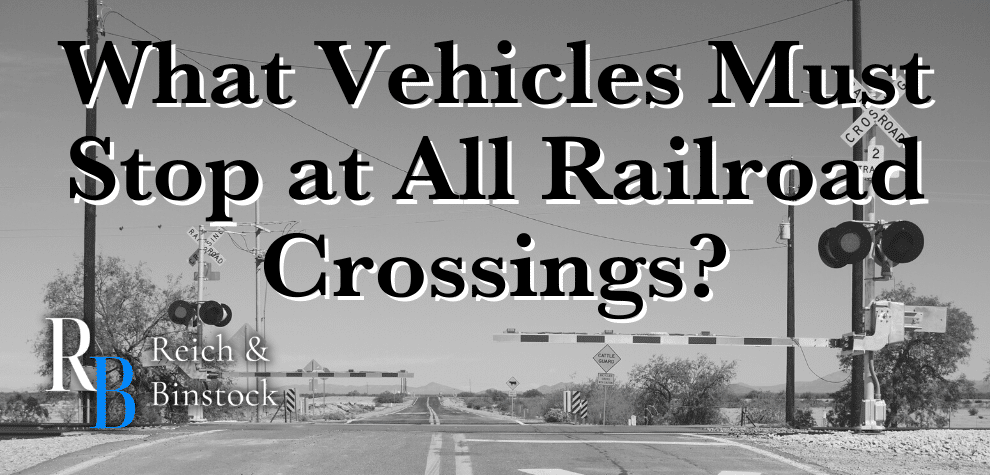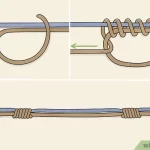What Vehicles Must Stop at All Railroad Crossings
Railroad crossings are critical points where roadways intersect with railway tracks. Safety at these crossings is paramount, as collisions between trains and vehicles can lead to severe injuries or fatalities. To mitigate these risks, specific regulations dictate which vehicles must stop at all railroad crossings. This article provides an in-depth look at the vehicles that are legally required to stop, the reasons behind these regulations, and the safety measures that should be taken at railroad crossings.
Understanding Railroad Crossings
A railroad crossing is a location where a railway line intersects a road. These crossings are marked with various signs and signals to alert drivers of approaching trains. The primary goal of these signals is to prevent accidents and ensure the safety of both train passengers and road users.
Types of Vehicles Required to Stop
Certain vehicles are mandated by law to stop at all railroad crossings. The following sections outline the types of vehicles that must adhere to this requirement.
1. School Buses
School buses are required to stop at all railroad crossings, regardless of whether there are signals indicating the approach of a train. This regulation is in place to ensure the safety of children, who may not be as aware of their surroundings. The driver must:
- Stop within 50 feet of the nearest rail.
- Look and listen for any approaching trains.
- Proceed only when it is safe to do so.
2. Commercial Motor Vehicles
Commercial motor vehicles, especially those transporting passengers, must stop at all railroad crossings. This includes:
- Buses that carry passengers for hire.
- Vehicles used for transporting hazardous materials.
- Trucks carrying flammable liquids or explosives.
These vehicles are required to stop to ensure the safety of the passengers and the general public. The driver must:
- Stop within 50 feet but not less than 15 feet from the nearest rail.
- Look and listen for trains before proceeding.
3. Vehicles Carrying Hazardous Materials
Vehicles that transport hazardous materials, including flammable liquids and explosives, must stop at all railroad crossings. This requirement is crucial to prevent catastrophic accidents that could result from a collision between a train and a vehicle carrying dangerous cargo. The driver must:
- Stop at least 50 feet from the nearest rail.
- Ensure the crossing is clear before proceeding.
4. Vehicles Towing Trailers
Vehicles towing trailers must also stop at railroad crossings. This is particularly important because the length and weight of the trailer can affect the vehicle’s ability to stop quickly. The driver must:
- Stop at the designated distance from the tracks.
- Look and listen for any approaching trains.
Legal Framework and Regulations
The requirement for certain vehicles to stop at railroad crossings is established by various state laws and regulations. Here are some key points regarding these laws:
- State Regulations: Each state has its own laws governing railroad crossings. For example, Maryland law requires specific vehicles to stop at all crossings, including school buses and vehicles carrying hazardous materials.
- Federal Regulations: The Federal Railroad Administration (FRA) provides guidelines that states must follow concerning railroad safety. These regulations help ensure consistency across the country.
- Penalties for Non-Compliance: Failing to stop at a railroad crossing can result in significant penalties, including fines and points on the driver’s license. In severe cases, it may lead to criminal charges if an accident occurs.
Safety Measures at Railroad Crossings
To ensure safety at railroad crossings, drivers should adhere to the following measures:
- Obey Traffic Signals: Always follow the signals and signs at railroad crossings. If lights are flashing or gates are down, do not attempt to cross.
- Look and Listen: Before crossing, stop and look in both directions for any approaching trains. Listen for warning signals.
- Do Not Rush: Take your time when approaching a railroad crossing. Rushing can lead to dangerous situations.
- Avoid Distractions: Stay focused while driving, especially when approaching railroad crossings. Avoid using your phone or engaging in other distractions.
- Educate Others: Share information about railroad crossing safety with family and friends, especially young drivers.
Summary of Vehicles Required to Stop
Here’s a summary table of the vehicles that must stop at all railroad crossings:
| Vehicle Type | Requirement to Stop | Key Points |
|---|---|---|
| School Buses | Yes | Must stop at all crossings, regardless of signals. |
| Commercial Motor Vehicles | Yes | Includes buses carrying passengers and vehicles with hazardous materials. |
| Vehicles Carrying Hazardous Materials | Yes | Must stop to prevent catastrophic accidents. |
| Vehicles Towing Trailers | Yes | Must stop to ensure safe crossing due to trailer length. |
Frequently Asked Questions (FAQ)
1. Which vehicles must stop at all railroad crossings?
School buses, commercial motor vehicles, vehicles carrying hazardous materials, and vehicles towing trailers must stop at all railroad crossings.
2. What is the distance at which vehicles must stop from the nearest rail?
Vehicles must stop within 50 feet but not less than 15 feet from the nearest rail.
3. Are there any exceptions to the stopping requirement?
Yes, exceptions can include crossings where traffic is controlled by a police officer or where “Exempt” signs are posted.
4. What are the penalties for failing to stop at a railroad crossing?
Penalties can include fines, points on your driver’s license, and in severe cases, criminal charges if an accident occurs.
5. How can I ensure safety at railroad crossings?
Always obey traffic signals, look and listen for trains, avoid distractions, and educate others about railroad crossing safety.
Additional Information
| Fact | Source |
|---|---|
| Specific vehicles must stop at railroad crossings to enhance safety and prevent accidents. | Wikipedia – Railroad Crossing |
Conclusion
Understanding which vehicles must stop at railroad crossings is crucial for ensuring safety on the roads. By adhering to the laws and regulations surrounding railroad crossings, drivers can help prevent accidents and protect themselves and others. Awareness and education about these requirements are essential for all drivers, especially those operating vehicles that are legally required to stop. Always prioritize safety and take the necessary precautions when approaching railroad crossings.



